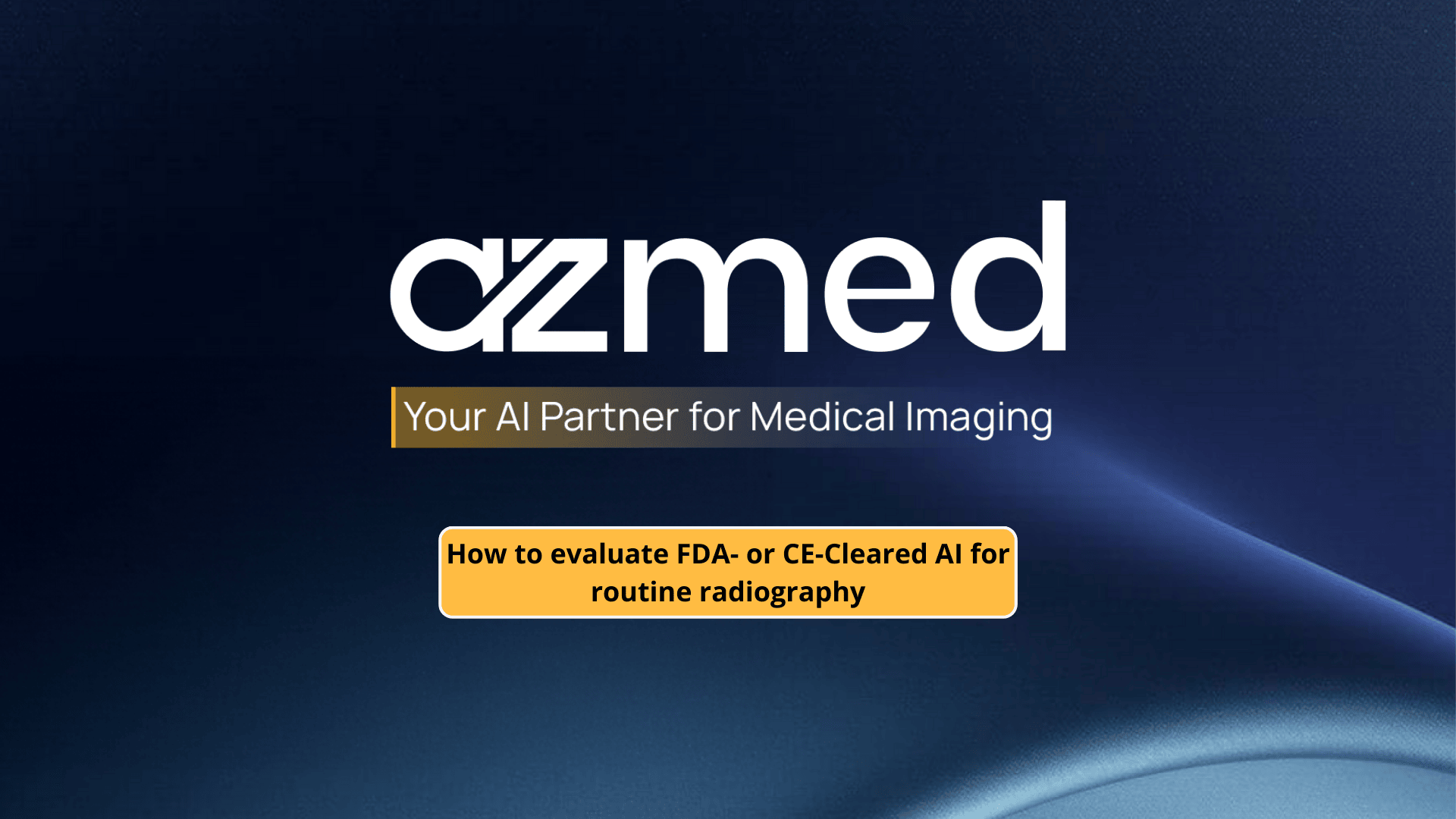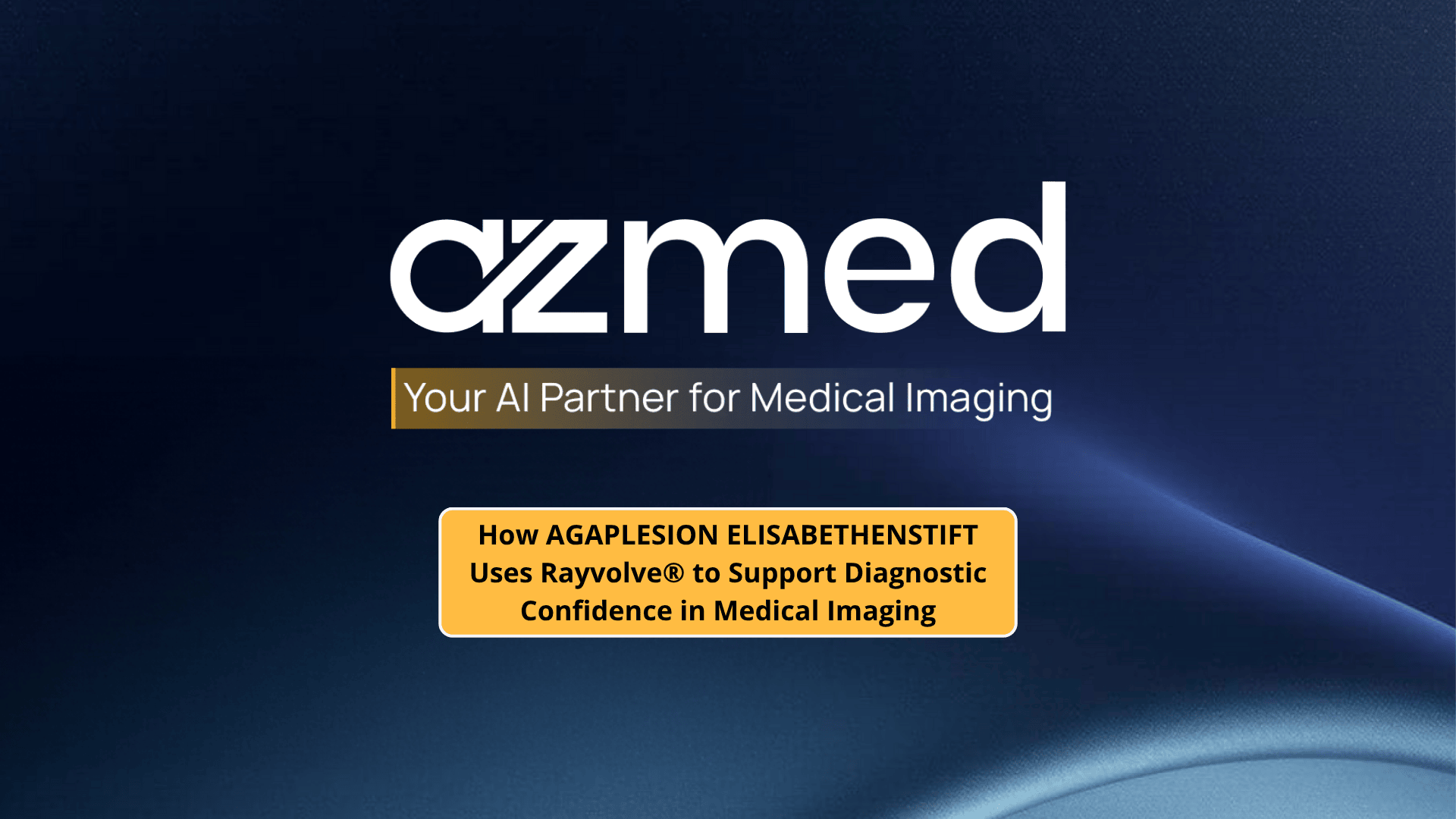Thank you! Your submission has been received!
Oops! Something went wrong while submitting the form.
Related articles

Product Launch
12/16/2025
AZmed Introduces AZnod, the First CT Solution in the Rayscan® AI Suite
AZmed, one of the leading companies in artificial intelligence (AI) for radiology, announced today the CE marking of AZnod, its first AI tool for computed tomography (CT) within the new Rayscan® product line. This expansion complements AZmed’s existing Rayvolve® AI Suite, extending the company’s portfolio beyond standard X-rays to include advanced CT-based analysis.

Blog
11/19/2025
How to evaluate FDA- or CE-Cleared AI for routine radiography
FDA clearance and CE marking are both essential for market access and regulatory compliance of AI radiology tools. These evaluations confirm that a device is safe, performs as intended, and complies with required quality standards. Yet, in practice, these approvals tell only half the story. That’s because they don’t guarantee that the AI tool will fit into your workflow, be used by your radiologists, and give you a good ROI. So the real question is no longer “Is it cleared?” but “Does it work in my practice, for my patients, with my team?” In this blog, we’ll cover what these approvals mean and five things to consider when evaluating FDA or CE-marked AI tools. We’ll also highlight how tools within the Rayvolve® AI Suite meet these expectations while also making sure they perform well in real-world settings.

Blog
11/11/2025
How AGAPLESION ELISABETHENSTIFT Uses Rayvolve to Support Diagnostic Confidence in Medical Imaging
At AGAPLESION ELISABETHENSTIFT, the AI deployment occurred not because of curiosity but because of a need for an additional layer of oversight for supervising the patient throughput. The number of specialists varies. The senior consultant in the surgical outpatient department of trauma surgery, orthopedics, and sports medicine, Dr. Sabine Geck, shared this comment: “We perform imaging day and night, but a radiologist is not always available 24 hours a day to interpret the studies”.
Optimize Your Workflow and Improve Quality of Care with AZmed
Discover the power of our AI Radiology Suite for X-rays today!
